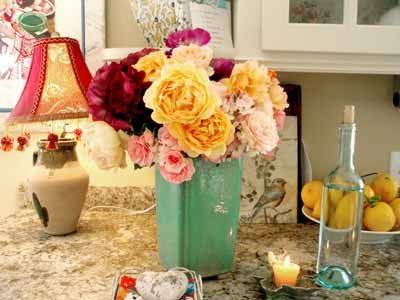
Summer is officially almost here, although we all know it actually starts on Memorial Day weekend. What fun stuff should you be doing in the garden? What problems should you be on the lookout for? What troublemakers should you avoid planting?
June is a busy time for plants. Some are just finishing up early spring flowering, including rhododendrons, azaleas, camellias, lilac and wisteria. It’s time to prune off spent flowers and shape plants if needed. Other plants are just beginning to flower and would like a dose of organic fertilizer to really perform well.
Basil tips
Plant your corn, lettuce and basil continuously to keep a steady supply.
Speaking of basil, if yours died recently showing brown spots or streaks up the stem, fusarium wilt, caused by a fungus, is the culprit. Carried by the soil the affected basil plants were grown in or by seed from an infected basil plant, it’s a common problem. There is no remedy for fusarium wilt. Destroy the infected plants, and do not plant basil or other mint plants in that area for two or three years.
Nighttime temperatures should be consistently above 50 degrees for basil. As long as you provide it with a hot, sunny location and plenty of water, it’s among the easiest of herbs to grow in the garden or in a container.
Steady, slow growth is the key to good taste, so amend the soil with compost and forgo the fertilizer. Basil contains the most oils when harvested before the flowers develop. The best way to delay flowering, and to encourage branching and new growth, is to harvest regularly by snipping off the ends of the branches.
The best time to harvest is midmorning, right after the dew has dried, but before the afternoon sun bakes out the oils.
At some point later in the summer, flowering will begin in earnest. Then it’s time to harvest the entire crop, as flavor will go downhill soon afterward.
Pest patrol
Insects are having a field day at this time of year, too. Put out wet rolled newspaper at night to collect earwigs in the morning.
If you see notches on your rose leaves, it’s the work of leaf cutter bees. These guys are beneficial and will go away shortly.
If your rose leaves look like lace, then you have the dreaded rose slug. I have a friend whose rose shrubs were really hit by these. It’s discouraging when you had visions of huge fragrant bouquets on every table. What to do?
The rose slug is actually the larva of a wasp called a sawfly. Because they may have six generations a year, they can do a lot of damage to roses. Early detection is key. Start scouting for sawfly larvae in early May, when they can be hand picked or washed from the leaves with a strong spray. If needed, spray the leaves with Neem oil while the larvae are still small. Conventional insecticides are toxic to them, but they kill the good bugs too.
During the winter, the bees pupate in the soil, so removing a couple of inches will help with controlling their numbers. Even cultivating the soil at any time will break up the cocoons.
Prevent overgrowth
Finally, think twice before planting rampant growers that are hard to control, unless you use a deep edging that will keep them confined where you want. There’s nothing wrong with a plant that spreads out in the right places, but let it overgrow that area and it will quickly wear out its welcome.
Plants like chameleon plant (Houttunyia cordata), lamium, its close relative lamiastrum and hypericum are great plants in areas that are not close to your other planting beds. The deceptively delicate-looking — but impossible to ever get rid of — Japanese anemone falls into this category, too. To be forewarned is to be forearmed. Plan ahead.
Get out and enjoy your garden. The best way to nip problems in the bud is to walk around your garden with a beverage of some kind and just keep your eyes peeled.
– Jan Nelson, a landscape designer and California certified nursery professional, will answer questions about gardening in the Santa Cruz Mountains. Email her at ja******@*ol.com, or visit www.jannelsonlandscapedesign.com to view past columns and pictures.












